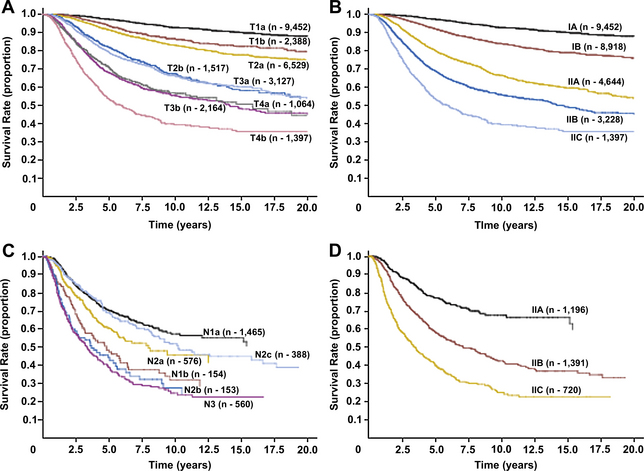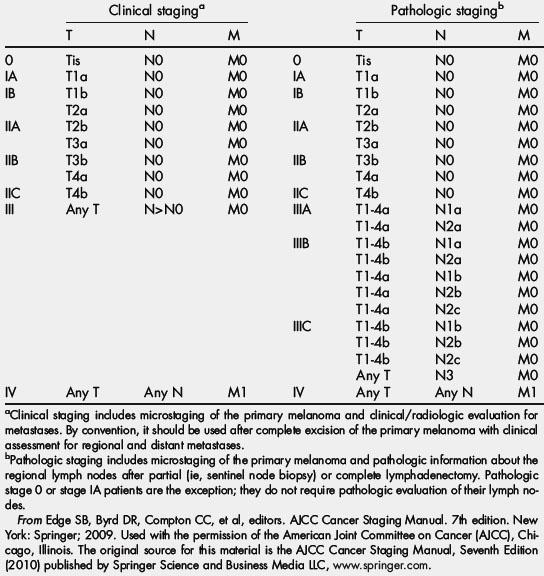What Does Ulceration of a Melanoma Mean for Prognosis?
Ulceration is defined pathologically as the absence of intact epithelium overlying a melanoma. In patients with cutaneous melanoma, ulceration of the primary melanoma is a well-known prognostic factor associated with decreased disease-free survival (DFS) and overall survival (OS); presence or absence of ulceration has been incorporated into the American Joint Committee on Cancer (AJCC) staging system for cutaneous melanoma since the sixth edition in 2002 [1]. Although the factors underlying the prognostic significance of ulceration are still largely unknown, ulceration is undoubtedly a marker of unfavorable tumor biology. Recent data suggest that ulceration may be a predictive marker for response to adjuvant interferon (IFN) alfa-2b therapy. This article reviews the data surrounding the prognostic implications of ulceration in cutaneous melanoma.
Ulceration as negative prognostic factor
Ulceration was first identified as a negative prognostic factor in cutaneous melanoma by Allen and Spitz [2] and Tompkins [3] in 1953. Throughout the subsequent three decades, many other groups corroborated this finding [4–6]. However, thickness of the primary tumor is also a key prognostic factor in melanoma, and the presence of ulceration strongly correlates with thickness of the primary tumor. For example, in a study of 250 patients with cutaneous melanoma, the incidence of ulceration ranged from 12.5% for melanomas measuring less than 0.76 mm in thickness to 72.5% for melanomas measuring greater than 4 mm in thickness [7]. Thus, the possibility existed that thickness of the primary tumor was a confounding factor when ulceration was identified as a negative prognostic factor in cutaneous melanoma.
In 1978, to differentiate ulceration from thickness of the primary tumor as a separate predictor of outcome, Balch and colleagues [8] performed a multivariate analysis of factors associated with the prognosis of cutaneous melanoma in 339 patients. They found that ulceration was indeed an independent negative prognostic factor; the presence of ulceration predicted a worse outcome even when taking primary tumor thickness into account.
Balch’s group went on to consider the idea that the presence of an ulcer crater might lead to an underestimation of actual tumor thickness, because tumor thickness is by necessity measured to the base of the ulcer. They examined 85 melanomas with micrographically measurable ulceration depth, and found that the median depth of ulcer craters was only 0.08 mm. Even if the thickness of the ulcer crater was added to the thickness of the primary tumor, no patient would have changed to a higher Breslow thickness group; therefore, no patient would have been expected to have worse survival because of ulceration leading to an underestimation of actual tumor thickness [7].
Cross-sectional measurement of ulceration has also been performed to quantify the extent of ulceration necessary to confer prognostic significance [7,9]. Balch and colleagues [7] found that patients with ulcers less than 6 mm wide had a 5-year survival rate of 44%, but patients with ulcers greater than or equal to 6 mm had a 5-year survival rate of only 5% (P <.001). However, a recent study by Sarpa and colleagues [9] evaluated extent of ulceration as a proportion of the primary tumor diameter, and found that ulceration of as little as 5% of the tumor diameter was associated with a decrease in OS.
Because ulceration has consistently been demonstrated to be an independent negative prognostic factor in cutaneous melanoma, it was incorporated into the AJCC staging system in 2002 [1]. Analysis of independent large databases has validated the introduction of ulceration into the staging system [10], and ulceration continues to be included in the most recent AJCC staging system update [11]. The AJCC seventh edition (2009) TNM staging categories and anatomic stage groupings for cutaneous melanoma are shown in Table 1 and Table 2. Essentially, given equal tumor thickness, the presence of ulceration increases the stage to the next highest grouping. For example, a patient with a T1 melanoma with ulceration is expected to have the same survival as a patient with a T2 melanoma without ulceration. This phenomenon is illustrated in Fig. 1A, based on data from the AJCC Melanoma Staging Database (data through 2008), which included 30,946 patients with stages I, II, and III melanoma [11,12].
| T category | Thickness (mm) | Ulceration status/mitoses |
|---|---|---|
| Tis | NA | NA |
| T1 | ≤1 | a: Without ulceration and mitosis <1/mm2 |
| b: With ulceration or mitoses ≥1/mm2 | ||
| T2 | 1.01–2 | a: Without ulceration |
| b: With ulceration | ||
| T3 | 2.01–4 | a: Without ulceration |
| b: With ulceration | ||
| T4 | >4 | a: Without ulceration b: With ulceration |
| N category | Number of metastatic nodes | Nodal metastatic mass |
| N0 | 0 | NA |
| N1 | 1 | a: Micrometastasisa |
| b: Macrometastasisb | ||
| N2 | 2–3 | a: Micrometastasisa |
| b: Macrometastasisb | ||
| c: In transit metastasis/satellite(s) without metastatic nodes | ||
| N3 | 4+ metastatic nodes, or matted nodes, or in transit metastases/satellites with metastatic nodes | — |
| M category | Site | Serum LDH |
| M0 | No distant metastases | NA |
| M1a | Distant skin, subcutaneous, or nodal metastases | Normal |
| M1b | Lung metastases | Normal |
| M1c | All other visceral metastases | Normal |
| Any distant metastasis | Elevated |
Abbreviations: LDH, lactate dehydrogenase; NA, not applicable.
From Edge SB, Byrd DR, Compton CC, et al, editors. AJCC Cancer Staging Manual. 7th edition. New York: Springer; 2009. Used with the permission of the American Joint Committee on Cancer (AJCC), Chicago, Illinois. The original source for this material is the AJCC Cancer Staging Manual, Seventh Edition (2010) published by Springer Science and Business Media LLC, www.springer.com.

(From Edge SB, Byrd DR, Compton CC, et al, editors. AJCC Cancer Staging Manual. 7th edition. New York: Springer; 2009. Used with the permission of the American Joint Committee on Cancer (AJCC), Chicago, Illinois. The original source for this material is the AJCC Cancer Staging Manual, Seventh Edition (2010) published by Springer Science and Business Media LLC, www.springer.com.)







